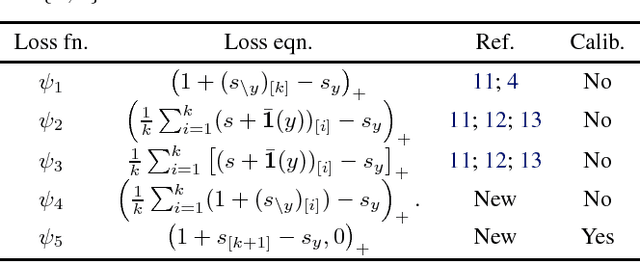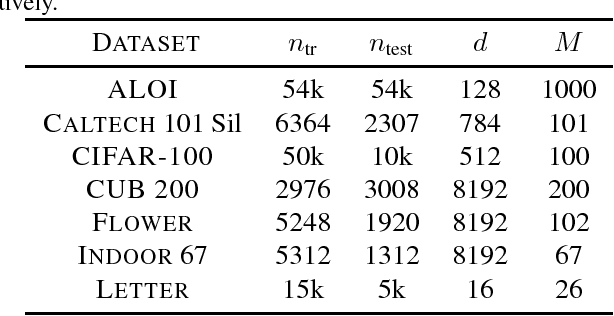On the Consistency of Top-k Surrogate Losses
Paper and Code
Jan 30, 2019



The top-$k$ error is often employed to evaluate performance for challenging classification tasks in computer vision as it is designed to compensate for ambiguity in ground truth labels. This practical success motivates our theoretical analysis of consistent top-$k$ classification. To this end, we define top-$k$ calibration as a necessary and sufficient condition for consistency, for bounded below loss functions. Unlike prior work, our analysis of top-$k$ calibration handles non-uniqueness of the predictor scores, and extends calibration to consistency -- providing a theoretically sound basis for analysis of this topic. Based on the top-$k$ calibration analysis, we propose a rich class of top-$k$ calibrated Bregman divergence surrogates. Our analysis continues by showing previously proposed hinge-like top-$k$ surrogate losses are not top-$k$ calibrated and thus inconsistent. On the other hand, we propose two new hinge-like losses, one which is similarly inconsistent, and one which is consistent. Our empirical results highlight theoretical claims, confirming our analysis of the consistency of these losses.
 Add to Chrome
Add to Chrome Add to Firefox
Add to Firefox Add to Edge
Add to Edge